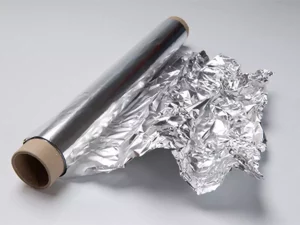Do you remember the movie “Home Alone”? Remember how Kevin McCallister set up all those traps to keep the burglars out of his house?
Well, imagine if you could do the same thing to keep mice out of your home. Minus the flamethrowers, of course.
Believe it or not, there could be a household item that can help you do just that. While there’s no official note on this, it can be possible.
In this article, however, we’ll be taking a look at the topic of using Aluminum foil to get rid of Mice.
Contents
Do Mice Hate Aluminum Foil?
From DIY enthusiasts to professional exterminators, everyone has their own theory when it comes to keeping mice at bay.
So how true is the topic of today?
That aside, let’s start with the basics. Aluminum foil, as we all know, is a common kitchen item that we use primarily for cooking and baking. It’s lightweight, malleable, and has a bright, reflective surface.

Now, imagine if you were a mouse, a creature that primarily depends on its hearing and smell senses to navigate its environment.
The crinkly, noisy nature of aluminium foil could be a significant deterrent for these creatures, which prefer to go about their business unnoticed.
Additionally, mice have delicate teeth which they use to gnaw through all sorts of materials – from electrical wires to drywall.
The texture of aluminium foil could be unappealing, if not downright discouraging, for a mouse’s chew-friendly lifestyle.
However, while the crinkly noise and texture may cause an initial fright or discomfort, it’s worth mentioning that this alone may not be a foolproof solution to a mouse problem.
Generally, Aluminum foil should only be used when covering food — they’re pretty much effective here. However, the food or item they’re used to covered to be well covered as well.
This is because Mice have a good smell that can easily detect food from afar off. And if there’s a substantial reward (like food) on the other side of the foil, they can take the risk.
Therefore, while aluminum foil could act as a temporary deterrent, it’s unlikely to provide a long-term solution.
More traditional methods of mice control, such as traps, professional extermination, and preventive measures like sealing entry points and maintaining cleanliness, are likely to be more effective in the long run.
How to Use Aluminum Foil to Keep Mice Out
Using aluminum foil as a deterrent can be applied in a variety of scenarios, depending on where you’ve spotted the mouse activity.
Kitchen
One of the most common use cases of Aluminium foil is in the kitchen, especially in pantries and cupboards, where food items are stored.

Wrapping food containers, boxes, or even the shelves themselves in aluminum foil might discourage mice from gnawing through to get to the food.
The crinkly sound and rough texture could be enough to keep these persistent pests at bay, at least temporarily.
Garden
If you have a garden shed or garage where you’ve noticed signs of mouse activity, consider lining the bottom of the walls or any small openings with aluminum foil.
Mice often sneak into these spaces to seek shelter or find food, and the foil could serve as a deterrent.
Cars
A less common but effective use case is in motor vehicles, particularly RVs or parked cars.
Mice can find their way into engine compartments or interiors, causing considerable damage. Placing crumpled aluminum foil in potential entry points or around wiring can help repel these critters.
Artics
Finally, if you are storing items in the attic or basement, particularly in cardboard boxes, consider wrapping the boxes in aluminum foil.
Mice often find these spaces attractive for nesting, and the foil might discourage them from setting up home in your stored items.
Recommended Ways of Actually Getting Rid Of Mice
While using aluminum foil can serve as a deterrent, let’s be clear that it is not the most effective solution to a mouse problem. So, what are some proven strategies to truly get rid of mice?
To begin with, cleanliness is key.
Mice are attracted to places where they can find food easily, so ensuring that your kitchen and pantry are clean and all food items are securely stored is a major step.
This also extends to outside your home. Trash bins should be sealed, and any fallen fruit or pet food should not be left out.
Secondly, mice are great at finding little nooks and crannies to squeeze through. Sealing potential entry points such as gaps in walls, doors, windows, or floorboards with a robust material like steel wool or caulk can effectively block their access. Remember, mice can squeeze through a hole as small as a dime!
If you’ve already got a mouse problem on your hands, traps are a tried-and-true method. There are various types of mouse traps available, from the classic snap traps to humane catch-and-release traps. You can bait them with food like peanut butter or cheese.
However, if your mouse problem persists despite your best efforts, it might be time to call in the professionals. Pest control services have access to more potent methods and substances, like rodenticides, and they have the expertise to handle infestations safely and effectively.
Finally, remember that prevention is better than cure. Keeping your home clean, regularly checking for and sealing potential entry points, and monitoring for early signs of mice can keep your home rodent-free.
Final Thoughts
So, to answer the question, “Do Mice Hate Aluminum Foil?” — it’s likely that they find it annoying and inconvenient, but it certainly won’t stop a determined mouse. A well-rounded approach involving cleanliness, home maintenance, and professional intervention when necessary will provide a far more effective solution.



